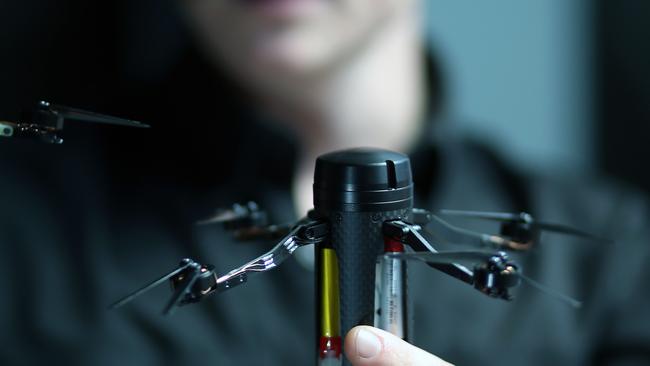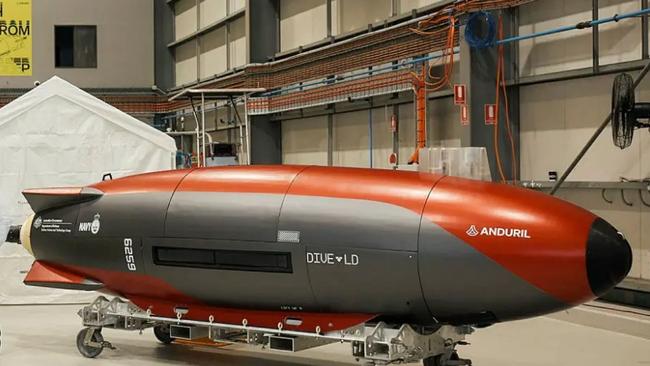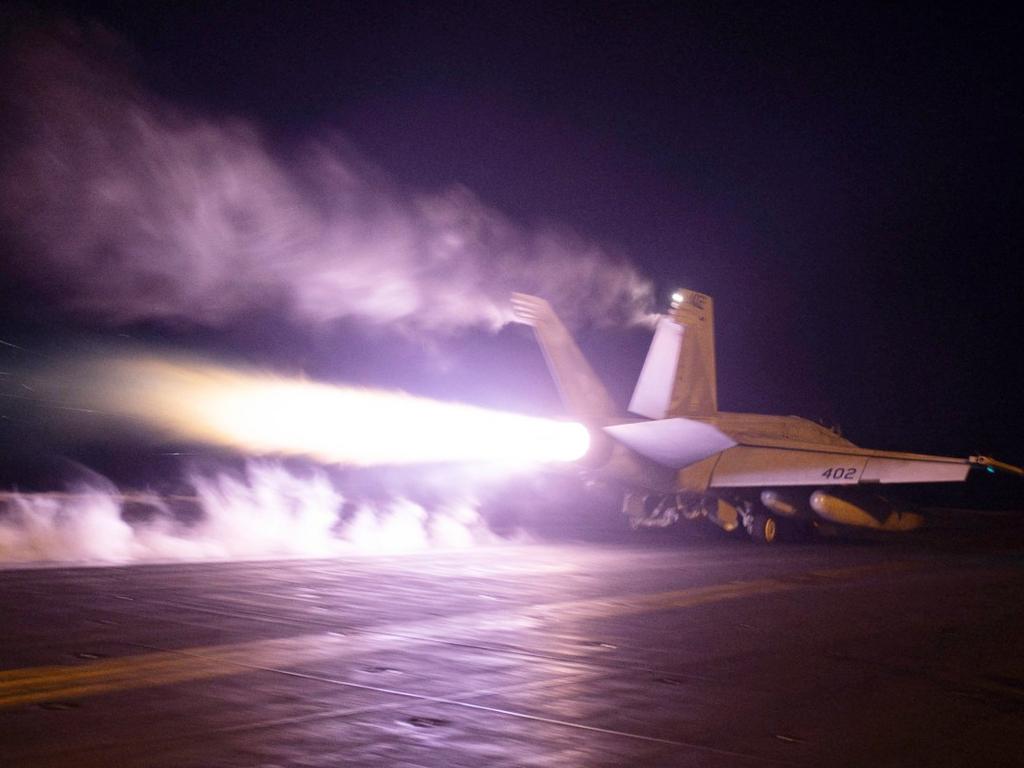Military madness: our troops ‘at risk’ without killer drones, former commanders warn
Two of the army’s most respected minds warn Australian troops will be exposed on the battlefield unless Defence urgently brings killer drones into service.

Two of Australia’s most respected military commanders say Defence needs to urgently get killer drones into service to give Australian forces a fighting chance on the modern battlefield.
With even Yemen’s Houthi rebels fielding an array of lethal unmanned systems, former chief of army Peter Leahy and the army’s former head of land capability Ian Langford said the Australian Defence Force was lagging behind potential adversaries in acquiring unmanned capabilities.
As the US reels from a suspected Iranian-backed drone strike in Jordan that killed three of its troops and injured 30, the decorated former commanders called for new combat drones to be funded in the upcoming budget, along with counter-drone technology to keep personnel safe.
The ADF has no lethal drones and is banking on two high-end systems – Boeing’s Ghost Bat and Anduril’s Ghost Shark – which may take years to become operational. Experts say Defence needs to dramatically widen its drone procurement plans to purchase low-cost expendable systems that can be deployed in large numbers.
There are growing concerns in military circles that an anticipated budget squeeze will slash $11bn that had been earmarked for “future autonomous vehicles” in the 2020 force structure plan.
Lieutenant General Leahy said without urgent steps to get combat drones into service, the ADF would face massive casualties against better-equipped forces.
“You’re not going to be able to deploy in the sorts of numbers you might want to; the level of attrition against your forces will be huge,” the now-University of Canberra professor said.
He blamed the “dead hand” of the Defence bureaucracy and government indecision for the ADF’s inability to equip its personnel with the sort of unmanned systems that were dominating the battlefields of Ukraine and the widening Middle East conflict.
“This stuff is just staring at us. I mean, how can you miss it? You go into JB Hi Fi and Harvey Norman and it’s there,” he said. “We are seeing it used in mining; energy companies are using it to patrol power lines; farmers are using it. Why wouldn’t Defence be all over this?”
Brigadier Langford, now a UNSW professor, said the ADF’s ability to deploy unmanned systems would mean the difference between victory and defeat in future conflicts, and the survival or loss of Australian personnel.
“Robotics and autonomous systems are today what tanks, aircraft carriers and fighter planes were in the 1930s,” he said.
“One only needs to see what has happened in Ukraine over the past two years to understand that.”


Brigadier Langford said Defence had a “moral obligation” to its personnel to give them the equipment that would keep them safe. “On the modern battlefield, robotics, automation and AI-enhanced decision-making is how you do that,” he said.
“We should aspire to never again commit a human to do anything dangerous that an autonomous system can do in its stead.”
Brigadier Langford pointed to the US’s “Replicator program”, unveiled last year and aimed at developing killer drones that can be operated in swarms to counter China’s growing mastery of unmanned systems.
“AUKUS will give us the opportunity to accelerate into robotic systems by leveraging many of the US and UK’s technology programs,” he said.
The commanders’ comments came as some of Australia’s most innovative defence technology companies said Defence continued to sideline their products.
The chief executive of ASX-listed DroneShield, Oleg Vornik, said the ADF had purchased only a handful of the company’s DroneGun counter-drone units, despite surging interest from the US.
“The irony is the Australian government has spent more on our kit to send to Ukraine than for the ADF,” he said, referring to a $10m donation to Kyiv by the federal government last year.
The Sydney-based company, which signed a $33m deal with the US Department of Defence in recent weeks, said the ADF was “very far behind” in the drone and counter-drone technology race.

Mr Vornik said he believed the Albanese government’s reluctance to send a ship to the Red Sea was at least in part driven by the navy’s vulnerability to the Houthis’ Iranian-supplied drones. “Single-use missile systems (used by the navy) either don’t work against drones, or they’re so expensive that if somebody sends 20 drones at a ship and you use 20 missiles to blow them up, that might be your entire arsenal,” he said.
Melbourne-based DefendTex CEO Travis Reddy said the company had been forced to work with the British government to get its kamikaze drones into service, despite receiving more than $5m from the ADF to develop the weapons.
He said ADF interest in the company’s D40, D81 and D155 quadcopter drones had stalled because of a certification issue before the British Ministry of Defence stepped in. “The issue with Australia, when you look at the (Defence investment plan), is it is very much not an early adopter of technology, unfortunately,” he said.
“The message is loud and clear – we’ll buy whatever is in service in America and pay a fortune for it.”


Last year’s Defence Strategic Review said the ADF’s operational success would depend on its ability to field uncrewed aircraft and submarines for surveillance and strike missions.
A Defence spokeswoman said: “The government continues to rebuild the Defence integrated investment program to align with the priorities outlined in the DSR.”
She said the MQ-28A Ghost Bat program, which has received $600m in taxpayers funds, was still undergoing testing, and scheduled for a “capability demonstration” in late 2025.
The aircraft, designed to work as a “loyal wingman” with manned combat jets, was a “developmental program” and an “entirely new technology”, the spokeswoman said.
She said prototypes of the Ghost Shark, an extra-large autonomous underwater vehicle that has received $70m in taxpayers’ funds, were due to be delivered by the end of 2025.
Successive governments have cancelled several major drone programs in recent years before they got off the ground, including the $1.3bn SkyGuardian combat drone, and the unarmed Schiebel S-100 Camcopter - a variant of which is operated by China.
But the Albanese government opted to push ahead with the Triton reconnaissance drone program, despite its $2.5bn price tag for just four aircraft.
Strategic Analysis Australia research director Marcus Hellyer said rather than focusing on expensive unmanned systems, it needed to pursue “the small, the smart and the many”.
“Instead of using one $5 million missile, you can use 100 $10,000 systems to achieve the same or better effect for a fraction of the price,” he said.
“That’s the kind of money Defence finds down the back of the sofa.”







To join the conversation, please log in. Don't have an account? Register
Join the conversation, you are commenting as Logout